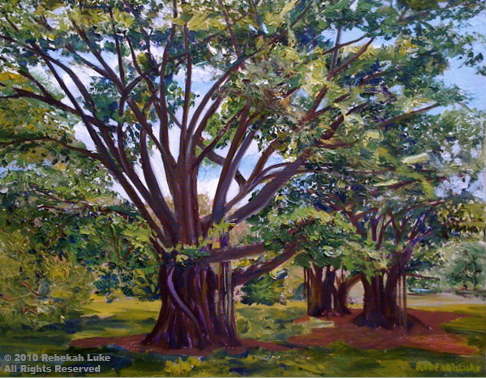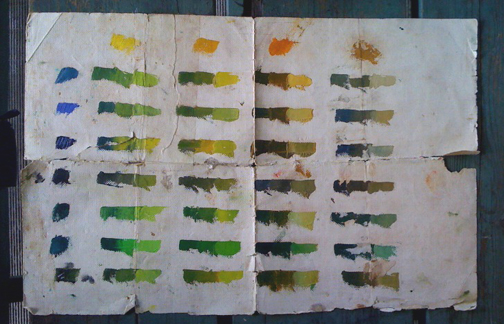
Remembering Susan Rogers-Aregger (June 28, 1951-July 2, 2017)
We were all blessed to know Susan and share her life. I will cherish her friendship always. Susan was my friend, teacher, and colleague. She taught me most everything I know about making art with tissue paper, marketing and selling art, and how to run an art gallery and co-op—all of which I have managed to do over the many years we knew each other.
I want to tell you about a bond we had. We had the same mentor, the colorist Gloria Foss. Since Gloria’s passing, Susan carried on her legacy of teaching collage; and I continued Gloria’s method of teaching oil painting and how to turn the form. Susan co-authored their textbook entitled Paper Dyeing for Collage & Crafts, and I had the privilege and honor of doing many of the photographs for How to Paint by Gloria Foss. We both loved to quote her to our students in class: “Gloria says . . .” Ahaha. But we go back further than that.
I first saw Susan when she was introduced by Ramsay Goldstein at a meeting of the Honolulu Branch of The National League of American Pen Women. At that time she was working at Ramsay Gallery in Chinatown. She flashed her big, cheerful smile, that toothy grin, happy to meet other artists, writers, and composers. I could see instantly that she was someone special. She looked like she would be good fun!
At that time I was a Letters member only, working with words, not images. Susan joined as an Art member. The Pen Women Art members were such an inspiration. I gravitated to learning about color and how to paint—from Gloria! Shortly after I had the guts to hang my paintings at the Honolulu Zoo Fence, Susan invited me to join the Arts of Paradise Gallery at the International Market Place, and the rest, as they say, is history.
I remember one day when Susan called and told me how sick Gloria was and how she was at her bedside urging her to hang on to life. No luck. Similarly, when I visited the Aregger home it was two days since Susan had lapsed into a coma. Dan and her hanai sister were there, as were two caregivers. The doctor had left, and they said he would come again the next morning. It was a beautiful day as I watched their whirligig in the wind on the beach, the wind blowing the clouds and the palm fronds, too, reminding that life is a continuum. I gave Susan some Reiki.
Hawaii’s poet laureate Don Blanding (1894-1957) wrote this poem I would like to share:
“Somehow”
I’ve tried for many an hour and minute
To think of this world without me in it.
I can’t imagine a newborn day
Without me here . . . somehow . . . someway.
I cannot think of autumn’s flare
Without me here . . .alive . . . aware.
I can’t imagine a dawn in spring
Without my heart awakening.
These treasured days will come and go
At swifter pace . . . but this I know . . .
I have no fear . . . I have no dread
Of the marked day that lies ahead.
My flesh will turn to ash and clay
But I’ll be here . . .
Somehow . . .some way. —Don Blanding
Rebekah Luke
July 30, 2017
Ho‘omaluhia Botanical Gardens, Oahu






Recent comments